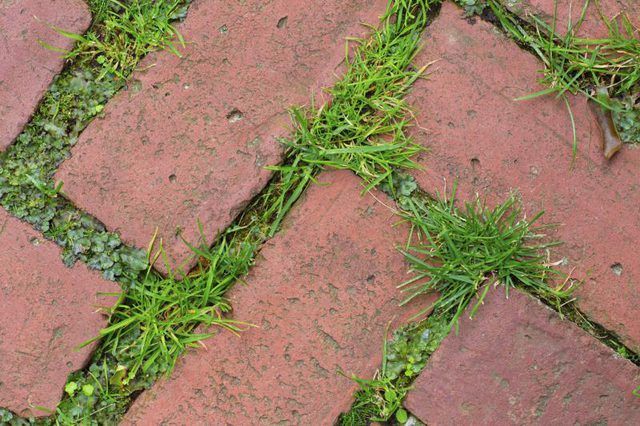Bulbs
Flower Basics
Flower Beds & Specialty Gardens
Flower Garden
Garden Furniture
Garden Gnomes
Garden Seeds
Garden Sheds
Garden Statues
Garden Tools & Supplies
Gardening Basics
Green & Organic
Groundcovers & Vines
Growing Annuals
Growing Basil
Growing Beans
Growing Berries
Growing Blueberries
Growing Cactus
Growing Corn
Growing Cotton
Growing Edibles
Growing Flowers
Growing Garlic
Growing Grapes
Growing Grass
Growing Herbs
Growing Jasmine
Growing Mint
Growing Mushrooms
Orchids
Growing Peanuts
Growing Perennials
Growing Plants
Growing Rosemary
Growing Roses
Growing Strawberries
Growing Sunflowers
Growing Thyme
Growing Tomatoes
Growing Tulips
Growing Vegetables
Herb Basics
Herb Garden
Indoor Growing
Landscaping Basics
Landscaping Patios
Landscaping Plants
Landscaping Shrubs
Landscaping Trees
Landscaping Walks & Pathways
Lawn Basics
Lawn Maintenance
Lawn Mowers
Lawn Ornaments
Lawn Planting
Lawn Tools
Outdoor Growing
Overall Landscape Planning
Pests, Weeds & Problems
Plant Basics
Rock Garden
Rose Garden
Shrubs
Soil
Specialty Gardens
Trees
Vegetable Garden
Yard Maintenance
Facts About Round Up Weed Killer
Facts About Round Up Weed Killer. Roundup is the trademarked name for a **broadleaf herbicide** manufactured by the Monsanto Company for residential and commercial agricultural use. For home use, Roundup is available in specific formulations for grass, weeds and brush; in liquid form that is ready to use directly; and in concentrated mixtures that...

Roundup is the trademarked name for a broadleaf herbicide manufactured by the Monsanto Company for residential and commercial agricultural use. For home use, Roundup is available in specific formulations for grass, weeds and brush; in liquid form that is ready to use directly; and in concentrated mixtures that must be diluted with water. The manufacturer also sells sprayers and a wand with a protective shield to prevent overspray onto desirable plants. Roundup is not organic, and should not be used in or near organically grown plantings.
How to Use
As with any chemical, always follow the manufacturerís directions for mixing and applying Roundup. Do not dilute ready-to-use products. Pour the recommended amount of concentrated product into a plastic sprayer and add the correct amount of water, taking care not to splash onto your clothing, skin or surrounding areas. Wear gloves, eye protection and a mask and wash your hands thoroughly after use. Spray Roundup directly onto the leaves of the weeds you wish to kill.
Roundup is most effective when applied with temperatures above 60 degrees Fahrenheit though it can be applied on cloudy days with temperatures as cool as 50 degrees Fahrenheit. Do not spray when it is windy or if it will rain before the product dries. Apply Roundup to weeds that are actively growing. The manufacturer claims that plants will wilt and turn yellow within three hours and will be completely killed in one to two weeks.
Keep people, pets and other animals off the treated area until the spray has dried to avoid tracking the weed killer onto lawns or other plants you do not want to kill. Roundup causes eye irritation, so thoroughly wash your hands after using, and gently flush eyes with water for 15 to 20 minutes if eye contact occurs.
How It Works
Glyphosate, the active ingredient in Roundup, is absorbed by the leaves and then reaches the roots. Roundup is an indiscriminate herbicide that will kill all plants it contacts, so be careful to only spray Roundup onto the plants you wish to kill.
Roundup products kill over 200 kinds of weeds, including dandelions, plantain, clover, chickweed and spurge. It also kills grass growing between cracks in sidewalks and patios, whether lawn grass, crabgrass, fescues, bentgrass or other native grasses. The manufacturer makes stronger products specifically for killing poison ivy, poison oak, kudzu and other persistent plants and tough brush.
Roundup will kill all plants it comes into contact with, so do not use it to spray weeds within your lawn, and be careful not to spray edible crops or desirable flowers and plants adjacent to the weeds you are spraying.
Health Considerations
The manufacturer claims that Roundup does not harm people or pets because its active ingredient, glyphosate, targets an enzyme found only in plants. However, a study published in BioMed Research International in 2014 shows that Roundupís formulation of glyphosate combined with other ingredients is one of the most toxic herbicides on the market. The inert ingredients in Roundup are added to increase the solubility of glyphosate and increase the productís shelf life, however these ingredients can also allow glyphosate to penetrate the cell walls of people, pets and other animals.
As published in Food Chemistry in 2014, Norwegian scientists found that Roundup used on commercial food crops is a systemic chemical, remaining in the plant through consumption of the final food product.
The World Health Organizationís International Agency for Research on Cancer stated in 2015 that glyphosate is "probably carcinogenic to humans" and has caused DNA and chromosomal damage in human cells; exposure was through direct contact when applicators inhaled the product while spraying, or when the product contaminated food and water.
Residue in Soil
Glyphosate has a half life -- the time required for a substance to break down to half its concentration -- up to 141 days, according to tests on American soils. Tests in Europe and Canada have shown glyphosate to persist in soils for up to three years, and it may remain in the soil for up to 22 years, affecting desirable crops years after it is applied. Residue remaining in the soil may be reactivated by phosphate fertilizers.